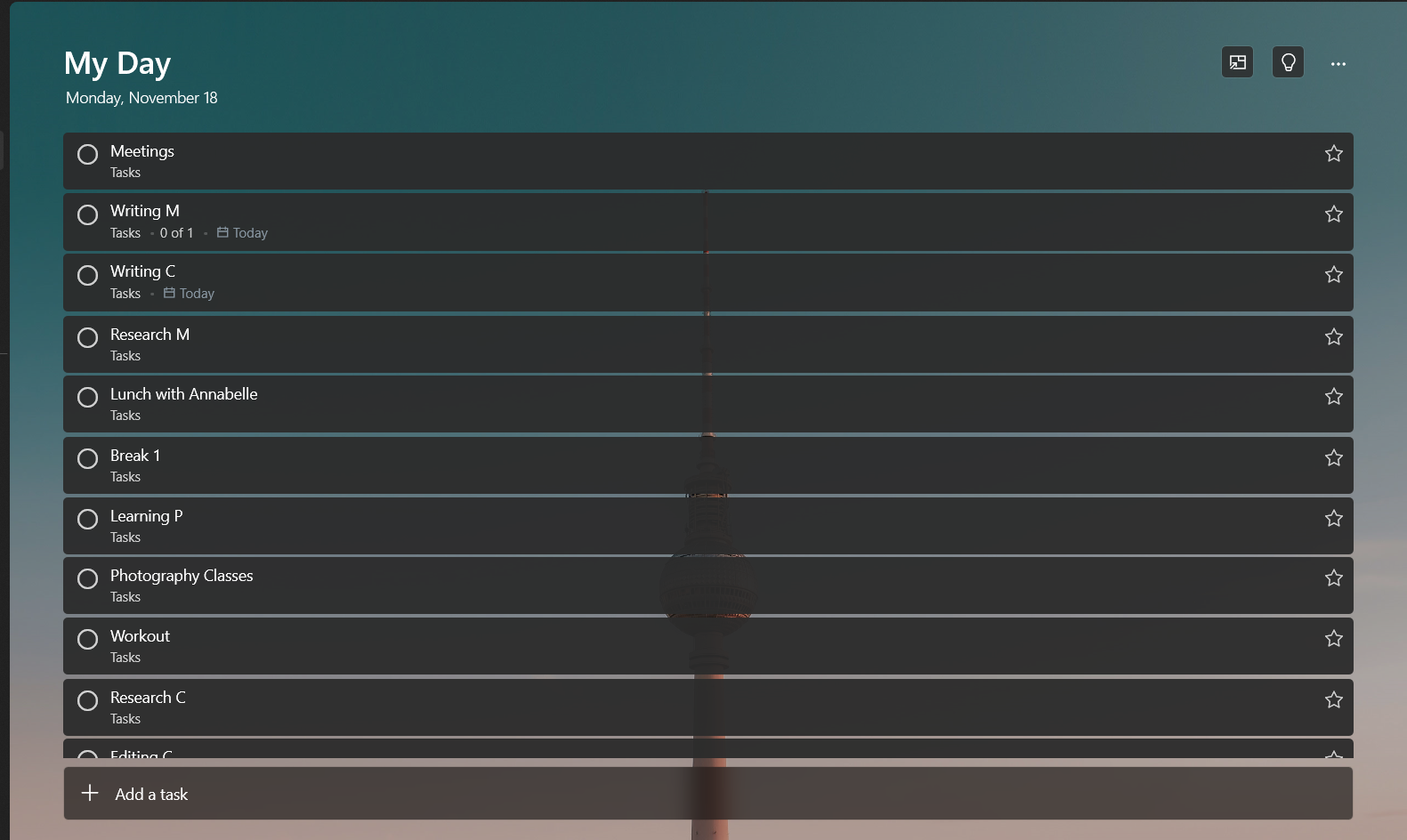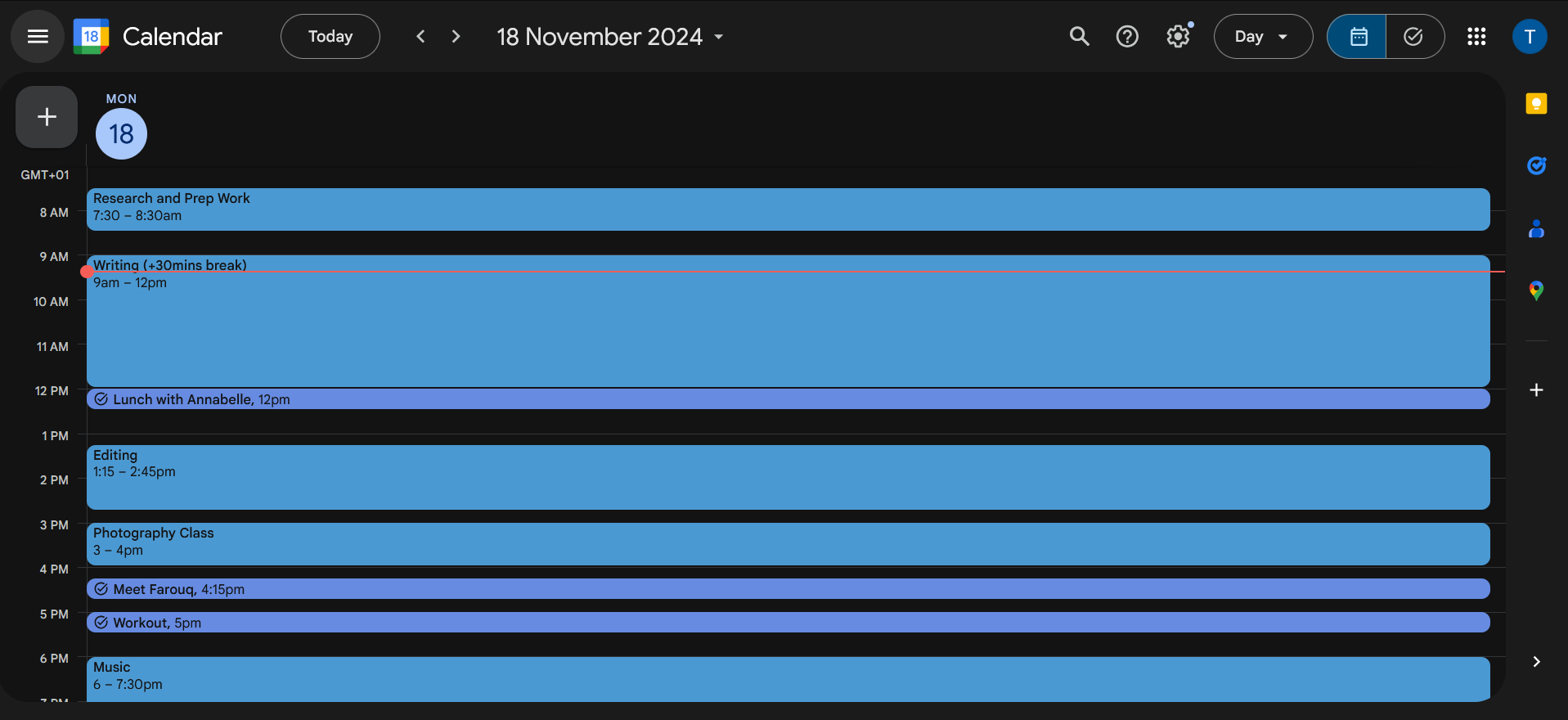Quick Links
-
How Task Batching Makes Me More Focused and Productive
-
When Is Task Batching Not Appropriate?
Task batching is a science-backed productivity technique that is very easy to use. It is an intuitive way to structure your day and complete more tasks in less time. While it is not a one-size-fits-all strategy, it can be a great place to start when developing your personal productivity system.
What Is Task Batching?
Task batching is a time management technique that involves grouping similar tasks and scheduling them for dedicated blocks of time, rather than tackling them at random times throughout the day. It is best for frequent activities with a clearly defined process.
While batch processing has its origins in manufacturing and early computing, it has only recently found application in time management and productivity. It builds off the concept that it is easier to continue a task once started, and switching tasks or dealing with interruptions can introduce a “switching cost,” which may lead to up to a 40% drop in productivity when accumulated, according to the American Psychological Association.
Task batching is similar to time boxing/blocking, where you divide your working time into fixed intervals scheduled for small segments of activity. However, unlike time blocking, task batching focuses on grouping similar tasks into uninterrupted sessions.
The duration of these sessions is still important, but it plays a less critical role compared to time blocking. Task batching is more flexible and may be better suited for individuals working on their own time.
Task batching and time-blocking techniques may function similarly in practice if you have a highly streamlined workflow.
Task batching as a productivity technique helps with achieving more tasks with less mental strain. It eliminates the time lost from frequently switching between work activities. It also helps you enter a state of flow since you are focused on a singular task for an extended period.
Task batching is easy to implement. Since it doesn’t require any unique features, apps that allow you to time block your day can also help you with task batching. If you prefer a low-tech approach, a physical journal will also work excellently.
How Task Batching Makes Me More Focused and Productive
I have slowly introduced task batching into my workflow over the past few months, and it has been a rewarding experience. It’s made me feel less anxious and overwhelmed, and I won’t be going back to planning every minute of my work day.
There are two major ways to use task batching: traditional task batching, where tasks are grouped into hourly blocks within a single day, and day theming, which involves assigning entire days of the week to specific types of tasks.
Traditional task batching is more congruent with the typical individual’s work schedule where different tasks have to be done before the end of the day. Day theming, on the other hand, is hard to fit into a traditional work environment and works better for self-employed people or top-level executives more concerned with the big picture than the active day-to-day running of a business.
Personally, traditional task batching is more suited to my workflow than day theming.
When drafting a plan for the day, I start by listing all the tasks I need to accomplish. I use Microsoft To Do (cross-platform and works offline) but there are several other great options for task management.
At this point in the plan, timing is less important than the activity itself. Once I have my to-do list, I can then select tasks that involve a similar process and group them into blocks. A block here is a collection of tasks that I need to carry out within a timeframe.
I use Google Calendar to create and label these blocks, scheduling them as events directly on my calendar. I can have up to five blocks in a single day, along with small tasks that don’t fit into any block.
The time frame needs to be defined when planning your day, but it can be as specific or flexible as you prefer in practice.
For example, as a writer, I would pick all the tasks that involve writing and put them in a singular Writing block. During that block, I would not do anything but write. Depending on the length of the block, I might take one or two breaks, but I always come back to writing.
There are a few principles to keep in mind when utilizing task batching in your work schedule:
- No Interruptions: It is very important to avoid interruptions during a time block, whether it is another task on your schedule or an unplanned activity. If something comes up while you are in a time block, it might be better to make a note to do it later than to abandon the current task.
- Take Breaks Between Blocks: You should take a proportionate break after a long stretch of activity. The traditional Pomodoro technique doesn’t fit with task batching, but you can modify it by doing longer sessions, e.g. a 90-minute block followed by a 20-minute break.
- Organize Based on Priorities: Not all urgent tasks are important and not all important tasks are urgent. It is important to prioritize even when you are working in batches. Understanding what needs to be done is the most essential part of scheduling.
When Is Task Batching Not Appropriate?
Task batching isn’t suitable for every situation. It’s most effective in environments where focus and concentration are prioritized, so it’s not ideal in settings where urgent problems need immediate attention, like customer service or emergency response.
Additionally, task batching may not work well for highly time-sensitive tasks, as it prioritizes the process over the outcome. For tasks that require quick results, like writing and researching an article, batching may slow you down.
Finally, when working in a team, task batching can be challenging because it’s difficult to coordinate schedules and priorities within a strict system.
Long hours of task batching might contribute to cognitive fatigue and even burnout. It is very important to take breaks between blocks and recognize your limits.
While task batching does not fit every workflow, it is a great time management technique that can significantly boost productivity, and if used correctly, leave you feeling good about what you’ve accomplished at the end of the day.






